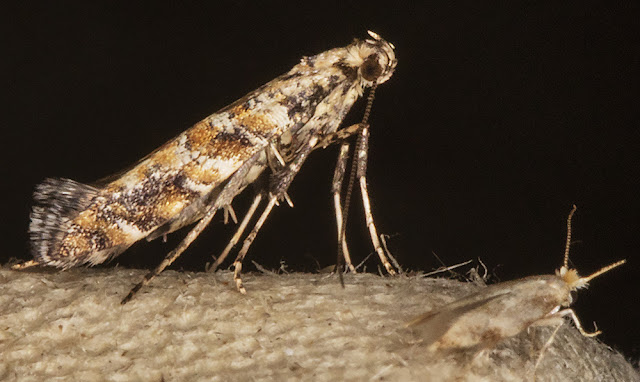 |
| Moths in my garden light trap, 25 August 2016. |
Those last two are quite small, but very distinctively marked, so I can identify them at a glance. But the tiny dark thing at top right is also a moth. It's one of a large family of tiny moths whose caterpillars live inside leaves, between the upper and lower skins, eating out their juicy centres and leaving a passage behind, so that they are known as leaf miners. It is (I think) in the genus Stigmella. These can not be identified to species without dissection.
Many of the tiny moths can only be taken to genus.
 |
| Parornix and Ectoedemia. West Wickham Common light trap, 24 August 2016. |
Amateur trappers mostly used to ignore these smaller moths completely until 2012, when a decent field guide to them came out. (*) Another guide is also now available (**) which includes photos of all the British moths, and if you know roughly what you are looking at, you can get a lot of help from the UK Moths site.
(*) Field Guide to the Micro Moths of Great Britain and Ireland, by Phil Sterling and Mark Parsons, illustrated by Richard Lewington. This relies on paintings and includes a key to genera, which is useful if you have a specimen and a low-powered microscope. Otherwise, go through the pictures!
(**) British Moths, second edition, by Chris Manley. This is a photographic guide and is enough better than the first edition that I use it a lot.

No comments:
Post a Comment